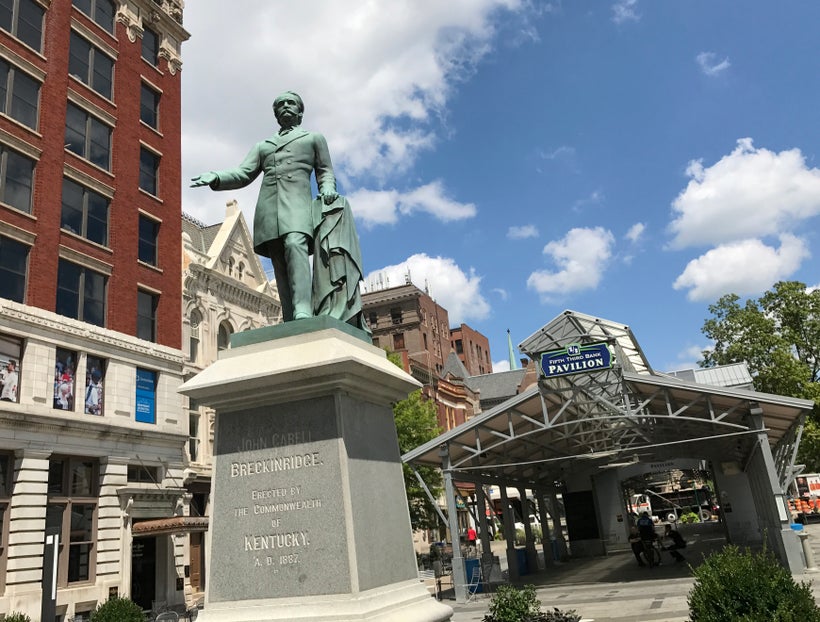The following originally appeared in The Huffington Post.
The issues surrounding the recent unrest in Charlottesville arrived on our doorstep in Lexington, Ky., when our mayor, Jim Gray, courageously called for an acceleration of the process underway to remove two statues from Cheapside Park in downtown Lexington. Once one of the largest slave auction blocks in the country, the site of this park and the Confederate statues that reside there are just three short blocks from the Transylvania University campus. If that isn’t close enough to home, both statues, one of John Breckinridge and the other of John Hunt Morgan, are Transylvania alumni.

Transylvania is a small school that has played an outsized role in shaping the history of our country with more than 100 United States representatives, 50 senators, two vice presidents and two Supreme Court justices among our alumni. We are proud of our 237 year history. Yet the history of any U.S. institution as old as we are is complicated.
As an institution of higher learning, one of our guiding principles is the pursuit of truth. Those who embark on this pursuit do not have the luxury to choose where or how or when it turns up. Finding truth requires an openness to what is new and different. It is to call into question what we think we know for the sake of what is to be known. But when truth emerges, we recognize it for what it is and we adjust our thoughts and our actions accordingly.
This takes courage. It is easier to reinforce our ideas with information that affirms what we already think. But that approach can never last. Transylvania University would not be around if we conducted business that way because we are invested in the future of our students. We build upon our history by questioning it in order to better understand how to move forward into the future.
The two statues in question at Cheapside Park memorialize men who were educated at Transylvania University. We do not try to hide the fact that many of our notable alumni were on the wrong side of history when it came to slavery. That is true.
The question is what we do with that truth.
I’m sure the men depicted in these statues had many admirable qualities. Fighting against the Union, fighting for a structure to preserve slavery, are not among them. Those endeavors are at odds with what we know to be at the heart of democracy, of justice, and of our humanity.
Another Transylvania alum from the same era, Justice John Harlan, captured these insights in an act of courage as the sole dissenter in the Plessy V. Ferguson decision of 1896. He wrote:
[T]here is in this country no superior, dominant, ruling class of citizens. There is no caste here. Our Constitution is color-blind and neither knows nor tolerates classes among citizens. In respect of civil rights, all citizens are equal before the law. The humblest is the peer of the most powerful. The law regards man as man and takes no account of his surroundings or of his color when his civil rights as guaranteed by the supreme law of the land are involved….
Moving these statues, to give them deeper and broader historical context, is to build on what we know to be true and on the values that are essential to a just and civil society. It is not to obliterate the past, but to learn from it as an investment in our future. We should not be focused on the symbols of tradition, but on the hard won products of tradition: freedom, democracy, and yes, kindness and generosity.
We can be on the right side of this issue or the wrong side. We can lead by principle or follow for expediency. To the extent that these men subscribed to racist views, their time has come and gone. The pages of history turn with or without us. Where do we want to be? What page do we turn to for our children to read? We are lucky today in that we can do more than dissent, powerful as dissent can be. We can lead.
